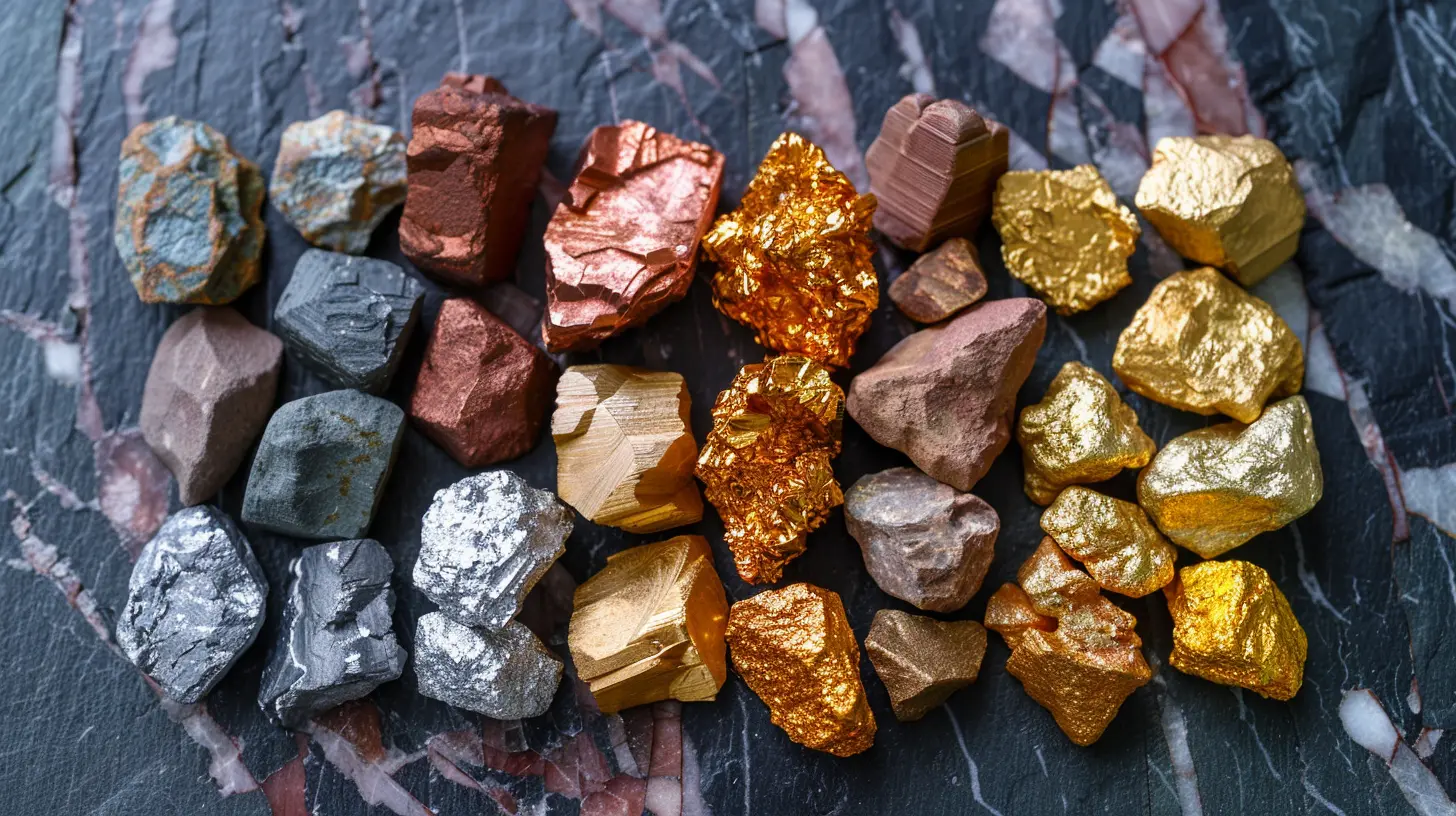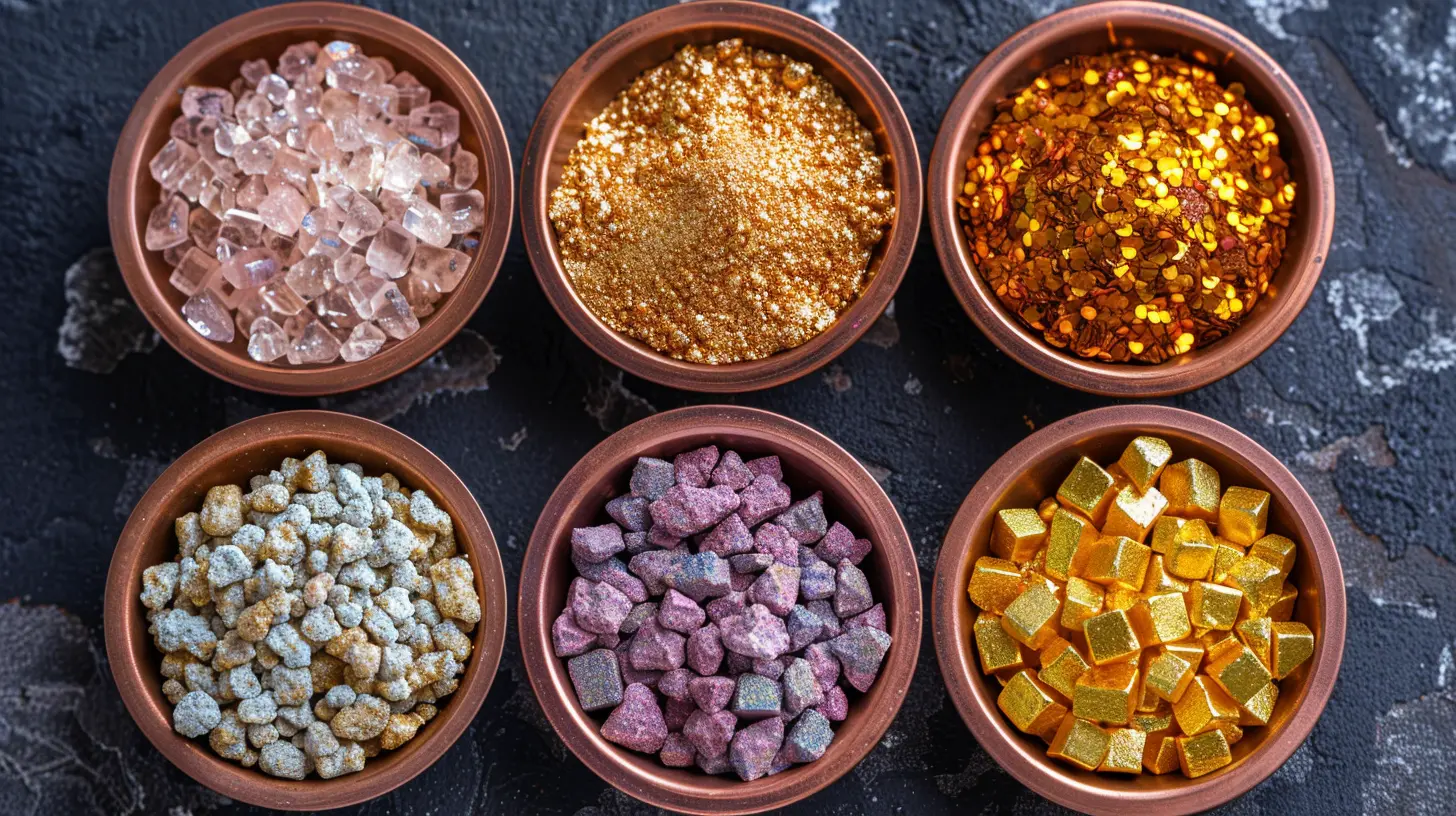The Role of Gold and Precious Metals in Asset Allocation
22 August 2025
Let’s get real—when it comes to investing, everyone’s searching for that magical combo of safety and growth. Your stock portfolio might be your knuckleball pitch, but gold and precious metals? They’re your defensive line when the market gets messy.
If you’ve ever wondered, “Should I really be putting my money into gold or other metals?”—you're not alone. Gold's glitter isn't just for jewelry. In fact, it plays a key role in how savvy investors build solid portfolios. Let’s break it down and see why metals are more than just shiny things sitting in a vault somewhere.

Why Talk About Asset Allocation in the First Place?
Before we dive into the sparkle of gold, let's step back and talk about asset allocation. This is just a fancy way of saying, “How do you spread your money around in different types of investments?” Think of it like building a balanced meal—you don’t want all carbs or all sugar. You want some protein, some veggies, a little starch. In investing, it’s the same vibe. Stocks, bonds, real estate, and yes—precious metals—are your ingredients.Asset allocation helps manage risk. If one area tanks, you're not left high and dry. That’s where gold and its sparkly cousins come in.
What Makes Gold and Precious Metals Special?
1. They Don’t Play by the Stock Market’s Rules
Here’s the deal: gold and precious metals often move in the opposite direction of stocks and bonds. When the stock market takes a nosedive, gold usually holds its ground—or even goes up. It’s like that one friend who stays calm under pressure when everyone else is freaking out.That’s because metals aren’t tied to a company’s performance or an industry trend. They’re independent. You can’t print more gold like you can with paper money, and that scarcity adds value—especially in turbulent times.
2. Inflation Protection
Let’s talk about that sneaky thief—inflation. Over time, inflation eats away at the value of your cash. What five bucks bought you ten years ago? It barely gets you a decent coffee now.Gold doesn’t love inflation, but it sure holds up well against it. When the value of currency drops, gold prices often go up. Investors flock to gold as a way to hold on to their purchasing power. It’s kind of like putting your money in a time capsule that inflation can’t touch.
3. It’s Tangible (You Can Actually Hold It)
Unlike stocks or crypto floating around in some digital cloud, precious metals are physical. You can hold a gold bar. There’s something very real and reassuring about that. It makes metals a favorite for folks who like to “see” their investments.This can also come in handy during extreme economic conditions. If the financial system ever hit serious turbulence, having something physical can offer peace of mind.
Meet the Precious Metals Squad
Gold might be the MVP of precious metals, but it's not the only player on the team. Let's meet its cousins:Gold
The star of the show. Used as a currency for thousands of years, gold is the go-to metal for investors in uncertain times. It has a well-earned reputation as a “safe haven” asset.Silver
Silver’s the little sibling—often cheaper, but way more volatile. It has both industrial uses and investment value. So, it dances to a funkier (and faster) tune than gold does.Platinum
Sounds expensive (and it is), but platinum is heavily used in industries like automotive production. Its price can swing depending on economic and industrial trends.Palladium
You don't hear as much about this one, but palladium has been gaining traction. It plays a huge role in car manufacturing (especially catalytic converters). It's more niche but rising in importance.
So… How Does Gold Fit Into a Modern Portfolio?
Now here's the million-dollar question: Where does gold (and other precious metals) belong in your asset mix?1. As a Hedge
Think of gold as your insurance policy. You don’t buy insurance because you expect things to burn down. You buy it because you know something could go wrong. Gold’s value tends to rise when other investments fall, giving your portfolio that cushion it needs when markets crash.2. As a Store of Value
Even if everything else fails, gold holds value. Always has, probably always will. From ancient coins to pirate treasures to modern bullion, gold’s value has stood the test of time.3. As a Diversifier
Gold adds a layer of diversification. While stocks and bonds may be driven by similar economic forces, gold dances to its own tune. That’s useful when trying to balance risk and reward.4. As a Long-Term Hold
Don’t think of gold as a quick flip. Sure, prices can rise sharply in times of crisis, but generally, you’re in this for the long haul. It’s the tortoise, not the hare.How Much Gold Should You Actually Have?
Ah, the golden question (pun totally intended).There’s no one-size-fits-all rule, but most financial advisors recommend somewhere between 5% to 10% of your portfolio in precious metals. Why not more? Because they don’t generate income like stocks or bonds. No dividends. No interest.
So, while they’re great for balance and protection, too much of a good thing can weigh you down—literally and figuratively.
You might raise the percentage if:
- You're seriously risk-averse.
- You're preparing for an economic downturn.
- You're worried about currency instability or inflation.
But again, moderation is key.
The Different Ways to Invest in Precious Metals
You don't need to bury gold coins in your backyard to get in the game (unless you're into that). Today’s investors have multiple ways to add metals to their portfolio. Let’s run through them:1. Physical Bullion
Gold bars, silver coins, platinum rounds—you name it. This is the most tangible form of investment.Pros:
- You own it outright.
- No counterparty risk.
Cons:
- Storage and security are a hassle.
- Can be less liquid.
2. Exchange-Traded Funds (ETFs)
ETFs like GLD (for gold) or SLV (for silver) track the price of metals without you needing to store anything.Pros:
- Easy to trade.
- No need for a vault or safe.
Cons:
- You're not holding actual gold.
- Subject to market trading fees.
3. Mining Stocks
Invest in companies that mine for metals. These stocks can offer leverage—when gold prices go up, mining companies usually benefit even more.Pros:
- Higher potential returns.
- Some even pay dividends.
Cons:
- Riskier and more volatile.
- Tied to company management and broader market trends.
4. Mutual Funds or Index Funds
These bundle together a group of mining companies or commodities into one package.Pros:
- Diversified.
- Professionally managed.
Cons:
- Fees can add up.
- Less control over specific assets.
5. Digital Gold and Crypto-Backed Metals
Welcome to the future. With digital gold platforms, you can buy fractions of real gold stored in secure vaults.Pros:
- Super accessible.
- Low entry barriers.
Cons:
- Still a new tech—need to vet platforms carefully.
- Regulatory risk is real.
The Risks (Because Nothing's Perfect)
Alright, so now that we’ve hyped up gold and precious metals, let’s level-set. They’re not magic. There are risks.- No Regular Income: Unlike stocks (dividends) or bonds (interest), metals just sit there.
- Volatility: Metals—especially silver and platinum—can swing hard.
- Market Sentiment: A lot of the value is psychological or speculative.
- Storage and Insurance Costs: For physical gold, these can eat into your returns.
- Tax Considerations: In some countries, precious metals are taxed differently. Know before you buy.
When Is the Right Time to Buy?
Trick question: there’s no perfect time. But here are a few solid cues:- When inflation is creeping higher.
- When currencies (like the dollar) are losing value.
- When political or economic uncertainty is rising.
- When interest rates are super low.
The goal isn’t to time the market but to build consistent exposure—like dollar-cost averaging.
Final Thoughts: Is Gold Worth Its Weight?
In a word? Yes.Gold and precious metals might not be the rockstars of your portfolio, but they’re the reliable roadies keeping the show running. They give you balance, protection, and a hedge against the chaos of the world’s financial circus.
And in today’s rollercoaster economy, having a little glitter in your portfolio isn’t just stylish—it’s smart.
Whether you're new to investing or a seasoned pro, don't overlook what gold and precious metals can do for your asset allocation. They’re not just another “shiny object”—they’re a time-tested tool for building financial resilience.
all images in this post were generated using AI tools
Category:
Asset AllocationAuthor:

Yasmin McGee
Discussion
rate this article
1 comments
Vanta Myers
Who knew gold and silver could double as financial bodyguards? They sparkle, they shine, and they protect your portfolio from those pesky market downturns! Let’s dive into why these shiny assets deserve a spot in your treasure chest!
September 10, 2025 at 4:48 AM

Yasmin McGee
Absolutely! Gold and silver not only add beauty but also provide a hedge against market volatility, making them essential components of a diversified portfolio.


